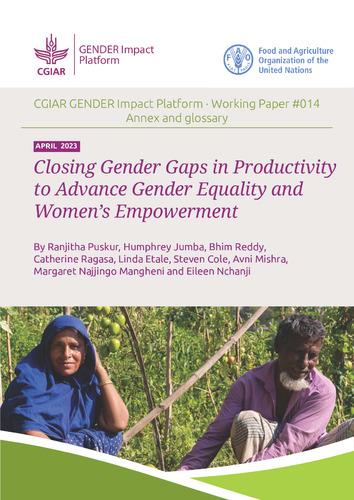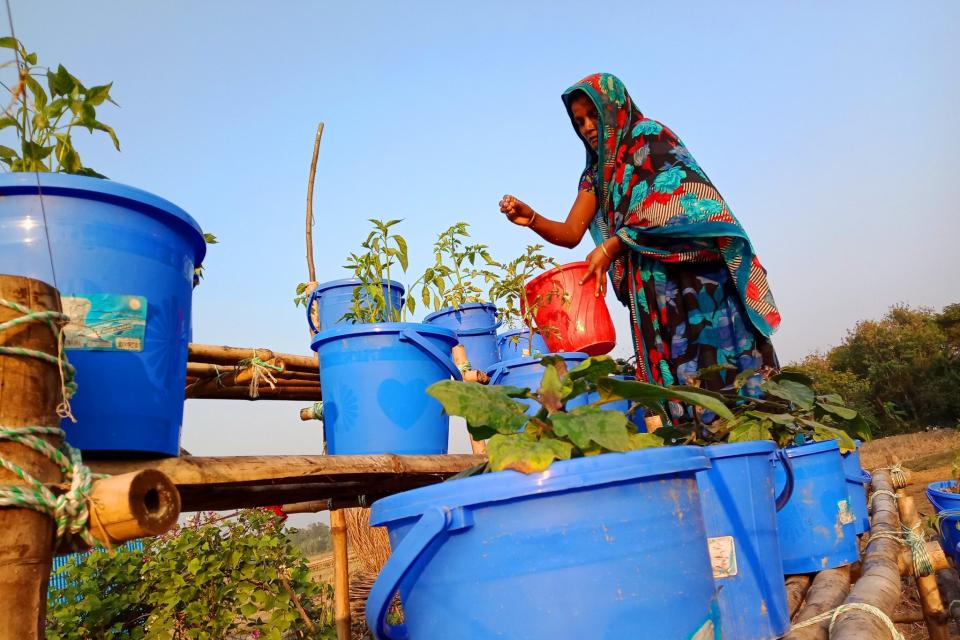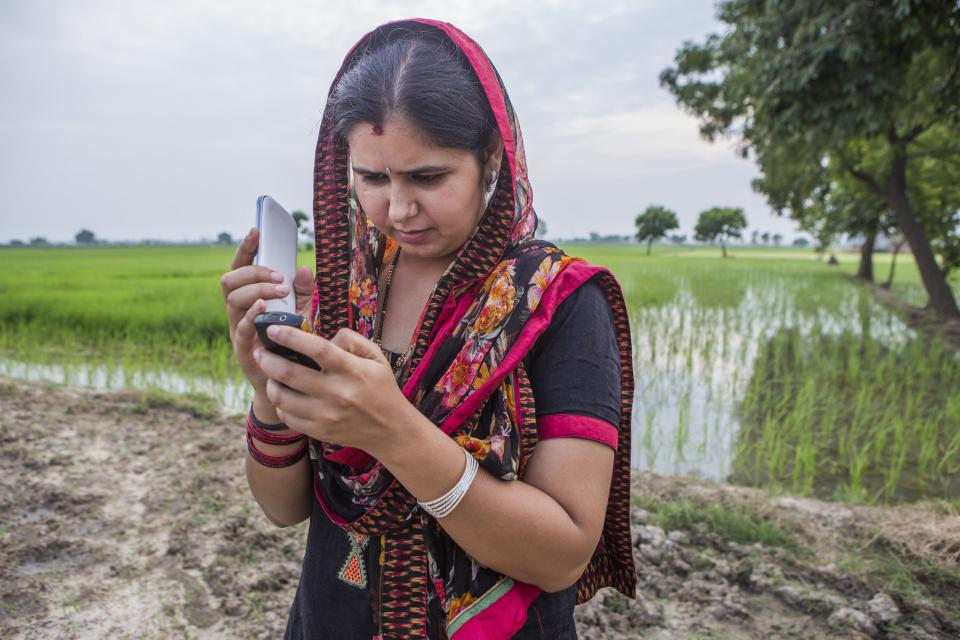The status of women in agriculture and food systems: persistent gaps and promising solutions
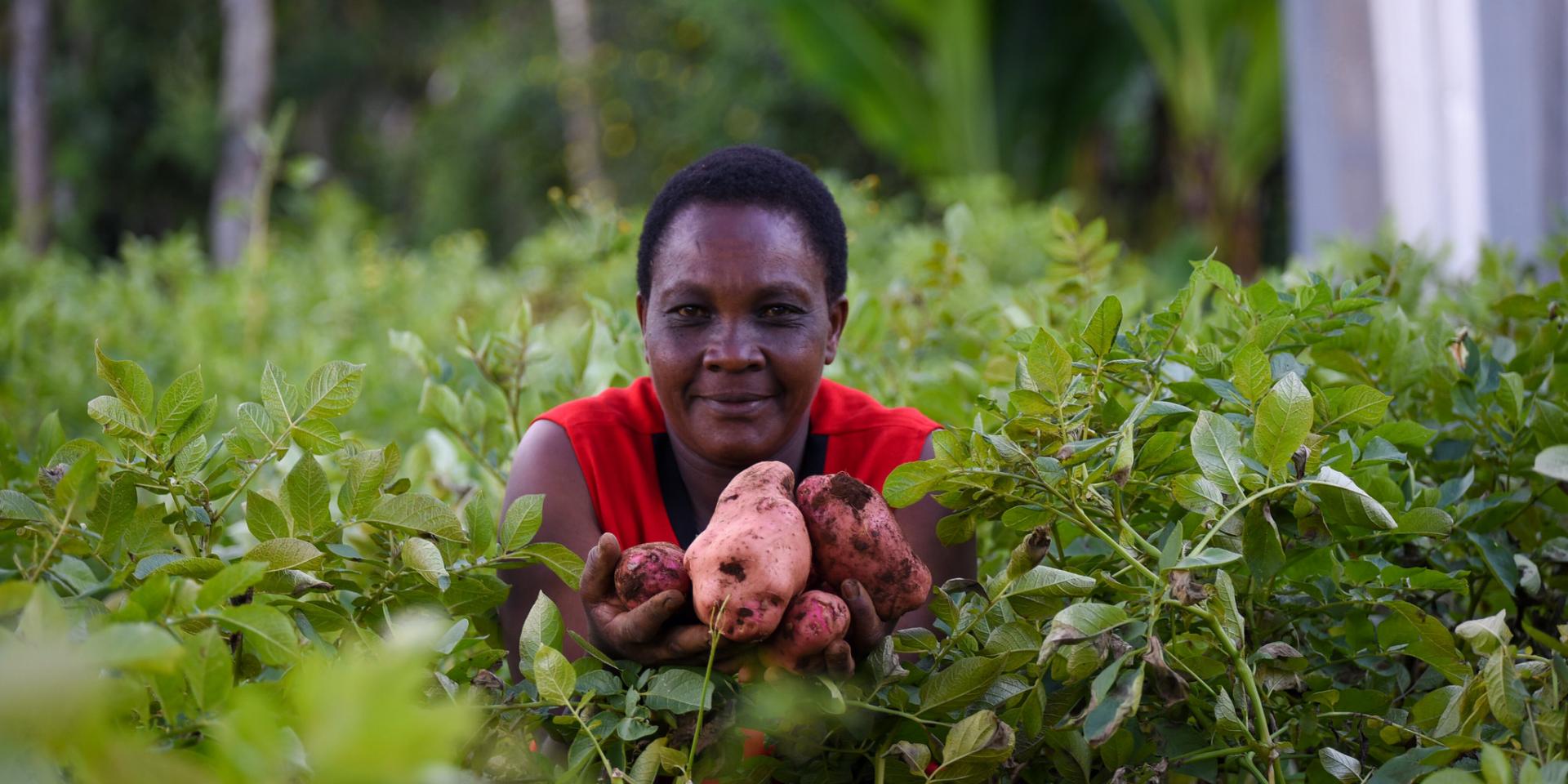 Photo: N. Ronoh/CIP.
Photo: N. Ronoh/CIP.
Key messages
- During the past ten years, significant progress has been made in understanding gender and social inequalities in agriculture and food systems. Yet, inequality remains severe and persistent.
- The root causes of gender and social inequalities are structural barriers that manifest as rigid, discriminatory gender norms, policies and institutions.
- Current evidence and recent experiences do offer promising solutions for addressing root causes. Most importantly, efforts to boost equality and women’s empowerment must be holistic, socially inclusive and integrated across scales—from households to markets and policies—in all food systems domains.
Research increasingly examines causes, not symptoms, of inequalities
Today’s gender research and discourse increasingly focuses on the underlying causes of inequality in food systems, such as persistent structural barriers and norms, rather than simply cataloguing the symptoms of inequality.
Addressing these root causes requires enabling transformative change and fostering women’s empowerment. Policymakers, development practitioners and researchers must ensure that such efforts are holistic, socially inclusive and integrated across scales—from households to markets and policies—in all food systems domains.
The CGIAR GENDER Impact Platform recently developed a global snapshot of gender and social equality and women’s empowerment, presented in seven recently published working papers.
The papers, covering six key themes:
- identify changes in thinking and progress on equality over the past ten years
- document promising solutions to create more equitable, just, resilient and sustainable food systems
The papers provided background for and informed the findings of the 2023 report The Status of Women in Agrifood Systems, recently published by the UN Food and Agriculture Organization (FAO).
Here we summarize the top insights from the seven working papers.
Progress in understanding of inequality and empowerment
During the past ten years, we have notably seen more systematic, large-scale data collection on gender norms. Likewise, progress has been made on how to define and measure women’s empowerment, with innovations in the direct, quantitative measurement of women’s agency.
Second, recent research sheds light on important complexities. For example, literature has expanded on the structural causes of women and men’s different capacities for climate adaptation and resilience. Recent studies also offer more nuanced evidence on the challenges of measuring gender gaps in agricultural productivity.
Third, research has begun to focus more on intersectionality—how social identities such as gender, age, marital status, ethnicity and caste together influence how farmers and other people are able to, for example, respond to climate change, control their livestock businesses or increase their agricultural yields.
Persistent inequalities remain
Gender and social inequalities remain severe in many agriculture-dependent, low- and middle-income countries. The main cause of these long-standing inequalities are structural barriers that manifest as rigid, discriminatory gender norms, policies and institutions.
These barriers hamper women’s access to productive resources, markets, technologies and information as well as their control over assets, which in turn affects productivity gaps. Likewise, customs, laws and regulatory mechanisms tend to lock women out of decision-making spaces, constraining women’s voices, agency and empowerment.
Examples include:
- Rural women’s access to and control over land and trees is customarily mediated and controlled by men within their families.
- Agricultural extension services continue to be delivered by men experts targeting other men, sometimes preventing women from accessing information and training.
- Local social norms and access to markets dictate the type of crops women can grow—reducing their ability to grow and profit from cash crops.
- Financial institutions require identification documents and collateral, which women are less likely to possess, to open bank accounts or obtain loans.
- State-based policies largely do not address important gendered barriers in, for example, livestock, fisheries and climate change.
Promising solutions for sustainable, transformative change
A number of promising approaches that address root causes of inequalities and foster women’s empowerment have emerged across the themes that GENDER’s working papers address.
- Create and support groups and social networks to improve women’s self-efficacy (belief that they can achieve their goals), social capital, agency and empowerment. Agricultural cooperatives can, for example, improve women’s access to resources, increase their access to markets and improve their productivity. Cooperatives have also proved effective avenues for disseminating information and for women to exchange knowledge.
- Bundle inclusive technologies and services to overcome gender gaps in productivity and other inequalities. Providing women with technologies that work for them, along with access to services, group-based platforms and participatory training, can create positive outcomes. Solid partnerships—between government, development partners, civil society, collectives and communities—are essential to build the mutual trust and long-term collaboration required when working to change gendered customs and power relations.
- Build capacity to improve women’s self-efficacy, support their involvement in decision-making and enhance their knowledge and skills. The way knowledge is shared is also important. For example, interactive voice-response technology instead of text messages can be a better option due to women’s generally lower literacy levels. Providing information to husbands and wives when they are together appears to have a positive effect on women’s empowerment; it gives women direct access to information, helps secure men’s support and challenges gender norms.
- Include women’s voices in policymaking and decisions at all levels through, for example, inclusive consultation processes. Including their voices is the only way that policies can be informed by and respond to women’s diverse experiences and adequately respect their rights. Similarly, women leaders and role models can challenge rigid gender norms and increase other women’s agency in areas such as investment, children’s education and cooperatives. Evidence indicates that farmers are most convinced by communicators who share their group identity or who have faced similar situations.
- Continuously but cautiously challenge prevailing gender norms and customs to address the root causes of gender inequalities. Working with men and boys—while being conscious of potential backlash and increased violence against women—can help shift toxic cultural beliefs, make men’s roles and masculinities more visible, alter gendered power relations and foster support and acceptance by men. Gender-transformative approaches can be used to increase women and men’s abilities to recognize and analyze systems of inequality and to take action against them.
Gaps in evidence
The insights summarized here were built from extensive reviews of evidence and experience, including input from gender researchers across CGIAR.
However, evidence is, in some cases, limited. For example, we need to:
- learn more about how climate-resilient and climate-smart innovations can be designed and scaled to address gender inequalities
- test and evaluate the long-term efficacy of gender-transformative approaches
- collect more data disaggregated by gender and other relevant intersectional characteristics
Finally, while GENDER’s working papers provided important inputs for FAO’s 2023 report, they are not exhaustive. Other partners reviewed tenure security; agricultural labor, and unpaid care and domestic work; agri-food value chains and market opportunities; migration and feminization of agriculture; and resilience to global shocks and stressors. Overarching conclusions and recommendations are available in FAO’s 2023 report The Status of Women in Agrifood Systems.
Suggested citation:
Gadeberg, M. and Lecoutere, E. 2023. The status of women in agriculture and food systems: persistent gaps and promising solutions. Nairobi, Kenya: CGIAR GENDER Impact Platform.
References

Equality and Empowerment by Gender and Intersecting Social Differentiation in Agri-food Systems: Setting the Stage

Fostering an Enabling Environment for Equality and Empowerment in Agri-food Systems
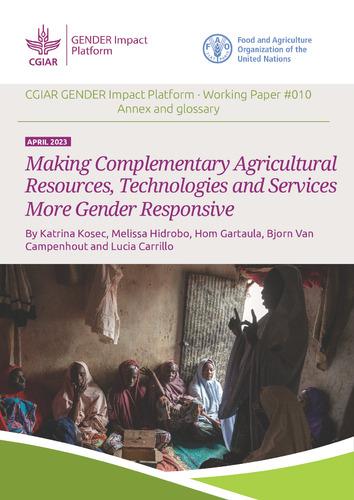
Making Complementary Agricultural Resources, Technologies and Services More Gender Responsive
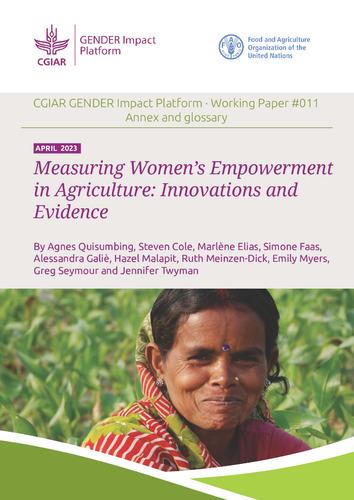
Measuring Women’s Empowerment in Agriculture: Innovations and Evidence
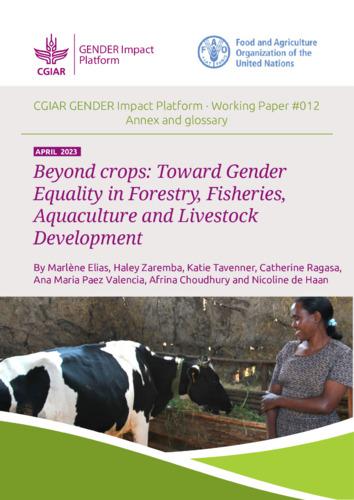
Beyond Crops: Towards Gender Equality in Forestry, Fisheries, Aquaculture and Livestock Development

Addressing Gender Inequalities and Strengthening Women’s Agency for Climate-resilient and Sustainable Food Systems
